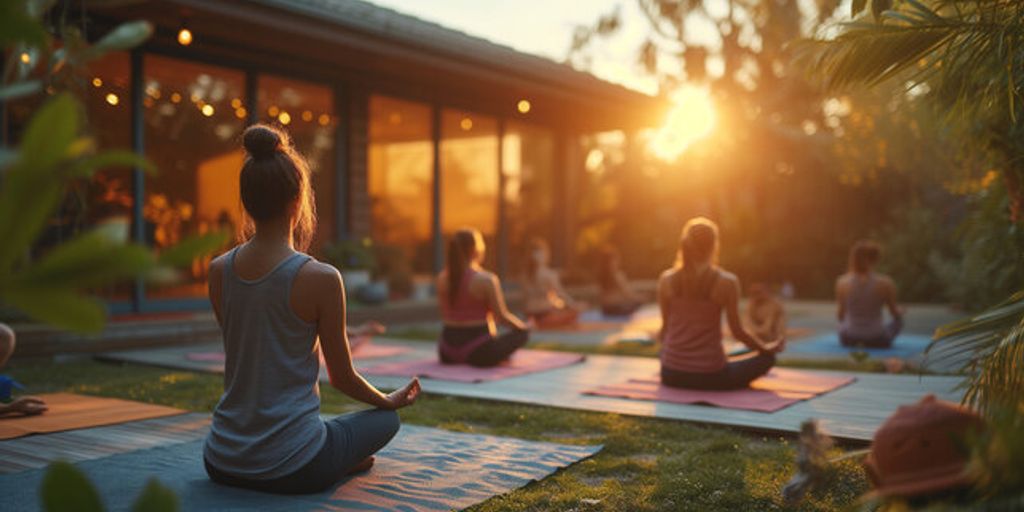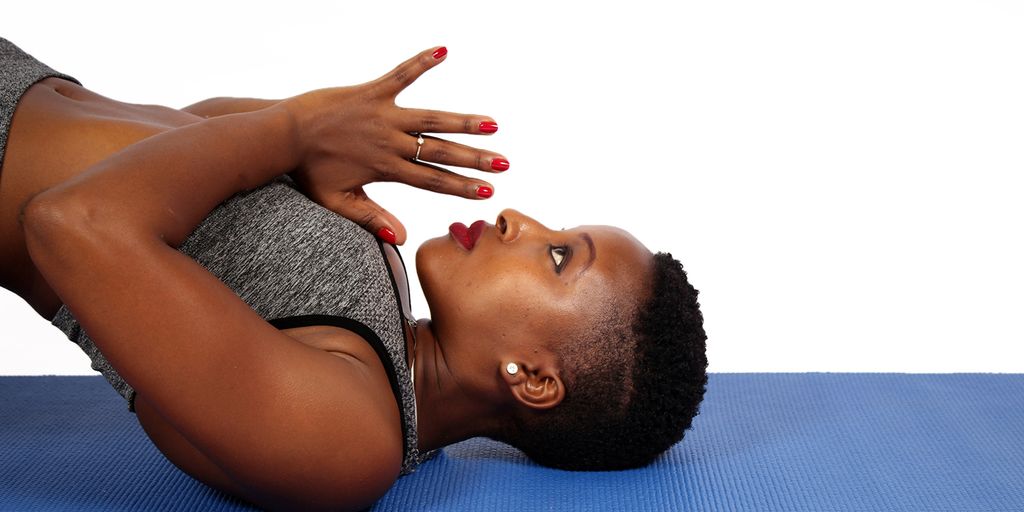
Choosing the Best Yoga Mat Material for Your Practice
Choosing the right yoga mat material is crucial for enhancing your practice and ensuring comfort, durability, and environmental responsibility. With numerous materials available, each offering unique benefits and drawbacks, it's essential to understand their properties to make an informed decision. This article will guide you through various yoga mat materials, focusing on their characteristics, eco-friendliness, durability, comfort, allergy considerations, cost, and sustainability.
Key Takeaways
- Natural rubber, PVC, and TPE are common yoga mat materials, each with distinct features.
- Eco-friendly options like cork, organic cotton, and jute are gaining popularity for their sustainability.
- Durability and longevity of a yoga mat depend on factors like wear and tear, maintenance, and material lifespan.
- Comfort and support are influenced by the mat's thickness, cushioning, texture, grip, and temperature regulation.
- Cost vs. value considerations include budget-friendly choices, premium options, and long-term investment.
Understanding Different Yoga Mat Materials
Choosing the right yoga mat material matters: finding the right yoga mat material for your practice. Explore natural and synthetic yoga mat materials for grip, durability, comfort, and eco-friendliness in yoga practice.
Eco-Friendly Yoga Mat Options
Cork
Cork yoga mats are a popular eco-friendly option due to their natural and renewable material. Cork is harvested from the bark of cork oak trees without harming the tree, making it a sustainable choice. These mats offer excellent grip and are naturally antimicrobial, which helps in maintaining hygiene.
Organic Cotton
Organic cotton yoga mats are made from cotton grown without the use of synthetic pesticides or fertilizers. This makes them a healthier choice for both the environment and your skin. They are soft, comfortable, and provide good traction. However, they may require more frequent cleaning to maintain their texture and grip.
Jute
Jute yoga mats are another sustainable option, made from the fibers of the jute plant. These mats are biodegradable and provide a natural, earthy feel. Jute mats are durable and offer good traction, but they might be slightly rougher on the skin compared to other materials.
Choosing an eco-friendly yoga mat not only benefits your practice but also contributes to a healthier planet. Consider the material's sustainability, comfort, and maintenance needs when making your choice.
Durability and Longevity of Yoga Mat Materials
Wear and Tear
Yoga mats are subject to significant wear and tear, especially with regular use. Natural rubber mats tend to show signs of wear more quickly compared to synthetic materials like PVC. However, they offer better grip and are more eco-friendly.
Maintenance Tips
Proper maintenance can extend the life of your yoga mat. Regular cleaning with a mild detergent and water can help maintain the mat's texture and grip. Avoid exposing your mat to direct sunlight for extended periods, as this can degrade the material.
Material Lifespan
The lifespan of a yoga mat varies depending on the material. PVC mats can last up to 10 years with proper care, while natural rubber mats may need replacement every 1-2 years. TPE mats offer a balance, typically lasting around 5 years.
When choosing a yoga mat, consider durability, eco-friendliness, and easy cleaning to ensure it meets your long-term needs.
Comfort and Support in Yoga Mat Materials
Thickness and Cushioning
Choosing a mat with the right thickness can improve balance and stability during poses. Thick yoga mats provide enhanced comfort and better joint protection. Selecting the appropriate thickness is crucial for your practice, especially if you have sensitive joints or require extra cushioning.
Texture and Grip
The texture of a yoga mat can significantly affect your practice. Mats with a textured surface offer better grip, preventing slips during poses. This is particularly important for dynamic or hot yoga sessions where sweat can make the mat slippery. Textured mats can enhance your stability and confidence in various poses.
Temperature Regulation
Some yoga mat materials offer better temperature regulation, ensuring that the mat remains comfortable to touch regardless of the room temperature. This feature is particularly beneficial for those practicing in varying climates or heated environments. Materials like natural rubber and cork are known for their excellent temperature regulation properties.
Comfort and support are essential for a fulfilling yoga practice. The right mat can make a significant difference in your overall experience, providing the necessary cushioning and grip to perform poses safely and effectively.
Allergy Considerations for Yoga Mat Materials
Hypoallergenic Options
When choosing a yoga mat, it's crucial to consider hypoallergenic options, especially if you have sensitive skin or allergies. Hypoallergenic mats are designed to minimize the risk of allergic reactions and are often made from materials like natural rubber, cork, or organic cotton.
Common Allergens
Yoga mats can contain common allergens such as latex, which can cause reactions in some individuals. It's important to check the material composition of the mat to avoid any potential allergens. Here are some common allergens found in yoga mats:
- Latex
- PVC
- Synthetic dyes
Skin Sensitivity
For those with skin sensitivity, selecting a mat made from gentle materials is essential. Organic cotton and cork are excellent choices as they are soft on the skin and less likely to cause irritation. Regular cleaning and maintenance of the mat can also help reduce the risk of skin reactions.
Choosing the right yoga mat material can significantly impact your practice, especially if you have allergies or sensitive skin. Prioritize materials that are hypoallergenic and gentle to ensure a comfortable and safe yoga experience.
Cost vs. Value in Yoga Mat Materials
Budget-Friendly Choices
When selecting a yoga mat, it's essential to consider your budget. Budget-friendly choices often include PVC and TPE mats, which provide decent durability and comfort at a lower price point. These mats are ideal for beginners or those who practice yoga occasionally.
Premium Options
For those willing to invest more, premium options like natural rubber, cork, and organic cotton mats offer superior comfort, support, and eco-friendliness. Premium mats often come with enhanced features such as better grip, thicker cushioning, and longer lifespan, making them a worthwhile investment for serious practitioners.
Long-Term Investment
Evaluating the long-term investment of a yoga mat involves considering its durability and lifespan. While premium mats may have a higher upfront cost, their longevity and performance can provide better value over time. Investing in a high-quality mat can save you money in the long run by reducing the need for frequent replacements.
Choosing the right yoga mat material involves balancing cost with the value it provides in terms of comfort, durability, and environmental impact.
Sustainability and Environmental Impact of Yoga Mat Materials
Biodegradability
When choosing a yoga mat, it's essential to consider its biodegradability. Unlike traditional mats, sustainable yoga mats are crafted from eco-friendly materials like rubber, cork, or recycled materials, making them biodegradable and non-toxic. This means they break down naturally without harming the environment.
Recyclability
Recyclability is another crucial factor. Many eco-friendly mats can be recycled at the end of their life cycle, reducing waste and conserving resources. Look for mats made from materials that can be easily recycled, such as TPE or certain types of rubber.
Manufacturing Processes
The manufacturing process of yoga mats can significantly impact the environment. Sustainable mats are often produced using energy-efficient methods and non-toxic substances. This reduces the carbon footprint and ensures that the mats are safe for both the user and the planet.
Choosing a sustainable yoga mat is not just about personal comfort; it's about making a positive impact on the environment. By opting for eco-friendly materials, you contribute to a healthier planet for future generations.
Choosing the right yoga mat is crucial for both your practice and the environment. At Yune Yoga, we offer a range of eco-friendly mats made from sustainable materials. Discover how you can make a positive impact on the planet while enhancing your yoga experience. Visit our website to explore our collection and find the perfect mat for you.
Conclusion
Choosing the best yoga mat material for your practice is a personal journey that depends on your individual needs and preferences. Whether you prioritize eco-friendliness, durability, comfort, or grip, there is a mat out there that will enhance your yoga experience. By considering the various materials available—such as PVC, TPE, natural rubber, and cork—you can make an informed decision that aligns with your values and practice style. Remember, the right mat can make a significant difference in your practice, providing the support and stability you need to deepen your poses and enjoy your time on the mat.
Frequently Asked Questions
What is the best material for a yoga mat if I have allergies?
Hypoallergenic options such as organic cotton and natural rubber are generally good choices for those with allergies. Avoid mats made from PVC, as they can contain allergens.
How do I clean my yoga mat?
Most yoga mats can be cleaned with a mixture of mild soap and water. It's important to follow the manufacturer's instructions for specific cleaning guidelines.
Is a thicker yoga mat better for joint support?
Thicker yoga mats provide more cushioning, which can be beneficial for joint support. However, they may also be less stable for balance poses. Choose a thickness that suits your practice style.
Are eco-friendly yoga mats as durable as conventional ones?
Eco-friendly yoga mats made from materials like cork, jute, and organic cotton can be just as durable as conventional mats, provided they are properly maintained and cared for.
What should I consider when choosing a yoga mat for hot yoga?
For hot yoga, look for mats with good grip and moisture absorption, such as those made from natural rubber or cork. These materials can help prevent slipping during sweaty sessions.
How often should I replace my yoga mat?
The lifespan of a yoga mat depends on its material and how often it is used. Generally, a good-quality mat should last between 1 to 5 years. Signs that it's time to replace your mat include wear and tear, loss of cushioning, and reduced grip.


